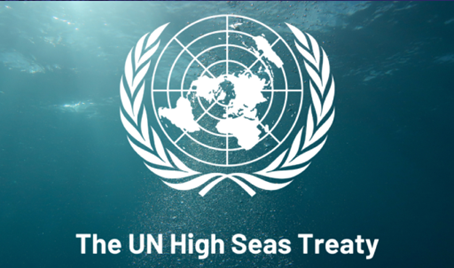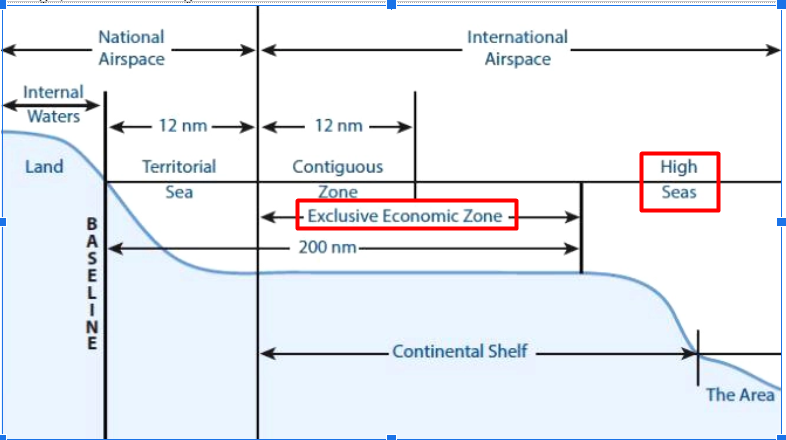- Courses
- GS Full Course 1 Year
- GS Full Course 2 Year
- GS Full Course 3 Year
- GS Full Course Till Selection
- MEP (Mains Enrichment Programme) Data, Facts
- Essay Target – 150+ Marks
- Online Program
- GS Recorded Course
- NCERT- First Ladder
- Polity
- Geography
- Economy
- Ancient, Medieval and Art & Culture AMAC
- Modern India, Post Independence & World History
- Environment
- Governance
- Science & Technology
- International Relations and Internal Security
- Disaster Management
- Ethics
- Current Affairs
- Indian Society and Social Issue
- CSAT
- 5 LAYERED ARJUNA Mentorship
- Public Administration Optional
- ABOUT US
- OUR TOPPERS
- TEST SERIES
- FREE STUDY MATERIAL
- VIDEOS
- CONTACT US
Between Hope and Hurdles India signs High Seas Treaty: BBNJ Agreement
Between Hope and Hurdles India signs High Seas Treaty: BBNJ Agreement

India’s recent signing of the High Seas Treaty, officially known as the Biodiversity Beyond National Jurisdiction (BBNJ) Agreement, is an important step in managing the world’s oceans.
- This agreement was signed by India's External Affairs Minister, S Jaishankar, at the United Nations General Assembly in New York on September 25, 2024.
- This treaty is considered a major effort under the UN Convention on the Law of the Sea (UNCLOS).
- However, while the goals of the treaty are ambitious, there are challenges in ratification, geopolitical issues, and implementation.
The treaty aims to:
- Protect marine life
- Ensure fair sharing of marine resources
- Control the environmental impact of human activities in areas beyond the control of any one country.
Main Challenges and Problems with the Treaty:
- Ratification Challenges: The treaty needs 60 out of 104 signatories to ratify it before it can start being fully implemented.
- The BBNJ Agreement has been signed by 104 countries. However, only 14 of them have ratified it so far. The treaty will only come into force when 60 ratifications are achieved.
-
This slow progress is because of:
- A lack of agreement among countries, due to geopolitical and economic concerns.
- Disputes over maritime boundaries, especially in sensitive areas like the South China Sea, where territorial claims overlap.
- This makes it difficult to create Marine Protected Areas (MPAs) and delays the treaty’s progress.
- Geopolitical Issues: Marine Protected Areas (MPAs) are central to the treaty’s plan to protect marine life by limiting harmful activities in these zones. However, creating MPAs is controversial:
- Coastal countries worry that these areas could interfere with their control over their territory or economic interests.
- Countries in Southeast Asia, for example, are divided over how MPAs might affect territorial claims and the livelihoods of coastal communities.
- Nations bordering the Bay of Bengal worry that MPAs could limit their access to important marine resources, highlighting a conflict between conservation goals and economic needs.
- Lack of Clear Implementation Guidelines: While the treaty sets out big goals, it doesn’t explain clearly how these goals should be achieved.
- For instance, the treaty requires Environmental Impact Assessments (EIAs) for activities that might harm the high seas, but it doesn’t provide specific instructions on how these assessments should be carried out, checked, or enforced.
- This lack of detail could lead to uneven application of the treaty, especially in countries that do not have strong systems to carry out these assessments.
- The treaty says that profits from using marine genetic resources (materials found in the high seas) should be shared fairly through a global fund.
- But, without strong accountability measures, wealthier countries might not report their activities correctly or might control the benefits for themselves.
- This could leave poorer countries behind and make global governance of the oceans more unfair.
- Risk of Conflicting with Other Agreements: The BBNJ Agreement could conflict with other international agreements, such as the Convention on Biological Diversity (CBD).
- This could lead to overlapping rules, making it harder for countries to follow both sets of guidelines.
- Smaller nations might struggle to navigate these competing legal systems, adding to the complexity of following international laws.
- Capacity-Building Gaps: While the treaty talks about the need for fair partnerships in ocean science, it does not make clear commitments to ensure that poorer countries receive the technical and financial help they need to participate fully.
- This could deepen the inequality between richer and poorer countries, as many poorer nations may lack the resources to fully engage in the treaty.
Other Key Issues in the High Seas Treaty
- The treaty only focuses on the high seas but ignores how marine ecosystems are connected across Exclusive Economic Zones (EEZs), which are areas where countries have rights to marine resources.
- Pollution, overfishing, and habitat destruction in EEZs often affect the high seas, so focusing only on the high seas risks undermining the treaty’s broader conservation goals.
- The treaty requires EIAs for planned activities, but it does not address the ongoing environmental damage caused by activities like oil and gas exploration.
- Coastal countries might not be willing to accept international reviews of their EIAs, weakening the treaty’s enforcement ability, especially in regions where local legal systems conflict with international standards.
Moving Towards Better Ocean Management
Addressing Key Gaps
For the treaty to succeed, its political and structural issues must be addressed:
- Combining high-seas and coastal rules to consider the connection between different marine areas.
- Coastal countries, especially in the Global South, need incentives to align their local laws with international standards.
- Richer countries must commit to providing technical and financial support to ensure fair implementation of the treaty.
A Unified International Effort
To achieve the treaty’s goals, there needs to be a global commitment to:
- Reach agreement on tough issues, like MPAs and the use of marine genetic resources.
- Develop strong mechanisms to ensure countries follow the rules and that the treaty is enforced.
Benefits for India:
- Allows India to enhance its strategic presence in areas beyond its Exclusive Economic Zone (EEZ).
- Provides shared monetary benefits to India.
- Further strengthens India's marine conservation efforts and collaborations.
- Opens new avenues for scientific research and development, access to samples, sequences, and information, capacity building, and technology transfer.
About UNCLOS:
Maritime Zones under UNCLOS
Disputes and Controversies
Significance of UNCLOS
|
Conclusion
The High Seas Treaty is a bold step to protect the oceans, which are shared by all nations. But for it to succeed, the gap between ambition and action needs to be closed. The treaty must overcome challenges related to implementation, geopolitical tensions, and enforcement. As marine ecosystems are under increasing stress, the treaty’s success will depend on global cooperation and shared responsibility to protect the oceans for future generations.
Must Check: Best IAS Coaching In Delhi
UPSC Prelims Result 2024 Out: Expected Cut Off & Other Details, UPSC Prelims 2024 Answer with Explanation, Daily Prelims Quiz, Daily Current Affairs, MONTHLY CURRENT AFFAIRS TOTAL (CAT) MAGAZINE, Best IAS Coaching Institute in Karol Bagh, Best IAS Coaching Institute in Delhi, Daily Mains Question Answer Practice, ENSURE IAS UPSC Toppers, UPSC Toppers Marksheet, Previous Year Interview Questions, UPSC Syllabus





